TD-GC-MS/MS: The Optimal Solution for Determining PFAS in Air
This blog is the first of two parts, demonstrating how GERSTEL enables PFAS determination in all matrices of interest, starting with air. The second blog will focus on GERSTEL solutions for PFAS determination in water and solid matrices.
PFAS in Air
 PFAS compounds can be released into the atmosphere through various industrial processes, emissions, and contamination sources. Determining PFAS in the air is crucial for assessing human exposure and environmental contamination levels. Although there are thousands of known PFAS, over time, some specific volatile PFAS species, such as fluorotelomer alcohols (FTOHs), have been identified as targets of particular concern1, allowing for a new focus on targeted, high throughput analyses.
PFAS compounds can be released into the atmosphere through various industrial processes, emissions, and contamination sources. Determining PFAS in the air is crucial for assessing human exposure and environmental contamination levels. Although there are thousands of known PFAS, over time, some specific volatile PFAS species, such as fluorotelomer alcohols (FTOHs), have been identified as targets of particular concern1, allowing for a new focus on targeted, high throughput analyses.
The Challenge of Airborne PFAS
Detecting and quantifying PFAS in air samples present unique challenges. These compounds are typically found at low concentrations, requiring analytical techniques that can provide extremely low detection limits while still being accurate and precise. Traditional methods, such as solvent extraction or solid-phase extraction, are often time-consuming and require large sample volumes, making them impractical for routine air monitoring. Due to the limitations of these traditional techniques, thermal desorption combined with gas chromatography and tandem mass spectrometry (TD-GC-MS/MS) is becoming the first choice for determining PFAS in air. This has been shown in a groundbreaking paper by the US EPA, which determined FTOHs emitted from consumer products1.
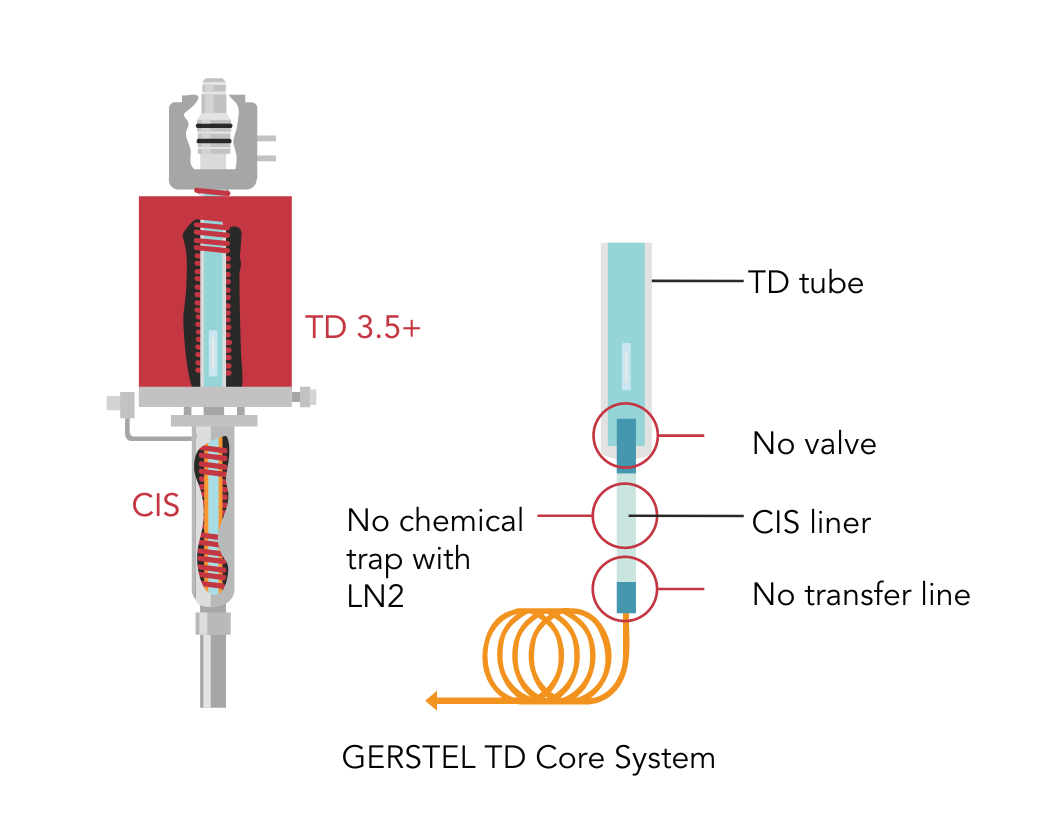
GERSTEL Thermal Desorption System: A Breakthrough Solution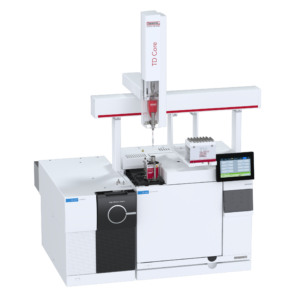
The GERSTEL Thermal Desorption System combines thermal desorption, gas chromatography (GC), and tandem mass spectrometry (MS/MS) to provide a highly efficient approach to determining PFAS in air samples. Let’s explore how this system effectively addresses the challenges of airborne PFAS analysis:

Enhanced Detection Limits: Thermal desorption enables all PFAS compounds captured from air sampling to be introduced into the GC-MS/MS system. This “splitless” means of sample introduction provides the lowest detection limits possible, allowing the system to meet the needs of this demanding analysis.

Flexible Sample Size: Due to the splitless injection capability, the GERSTEL system does not require large sample volumes, making it suitable for routine air monitoring. This reduces the need for large air samples and minimizes resource consumption. However, large volumes of air are also possible due to the valve-free nature of the TD and the use of MS/MS as a way to decrease the background from large volumes.

Rapid Analysis: Thermal desorption is a quick and automated process, reducing analysis time and improving workflow efficiency. This is especially valuable when monitoring air quality in real-time or during emergencies.

Comprehensive Analysis: The GERSTEL system can determine a wide range of PFAS compounds, providing a comprehensive view of PFAS contamination in air. This capability is vital for understanding the full extent of PFAS pollution.

Quantitative Accuracy: Coupled with GC-MS/MS, the system offers high precision and accuracy in quantifying PFAS concentrations, ensuring reliable results for regulatory compliance and risk assessment.

Environmental Monitoring: Assessing air quality near industrial sites, airports, and areas with historical PFAS contamination to track pollutant levels and mitigate risks.

Workplace Safety: Ensuring safe working environments for employees in industries that may release PFAS into the air, such as semiconductor manufacturing or firefighting training facilities.

Emergency Response: Rapid assessment of PFAS contamination in the air following chemical spills or fires, facilitating immediate mitigation measures.

PFAS free sampling train and sample pathway: As mentioned in EPA’s OTM-45 and OTM-50 methods, Teflon and other sources of PFAS must be removed from the analysis. When coupled with a Teflon-free sampling regime, the Teflon-free sample pathway of GERSTEL TDs provides the only means for defensible data.
Indoor Air Sampling Study
To further prove the utility of TD-GC-MS/MS for the determination of FTOHs in air, a study (AppNote 262) was performed where air was sampled in a number of residential and commercial locations. The chromatogram below shows 4 FTOHs obtained using the GERSTEL TD 3.5+ Thermal Desorption System and the table shows the concentration levels found in each location.
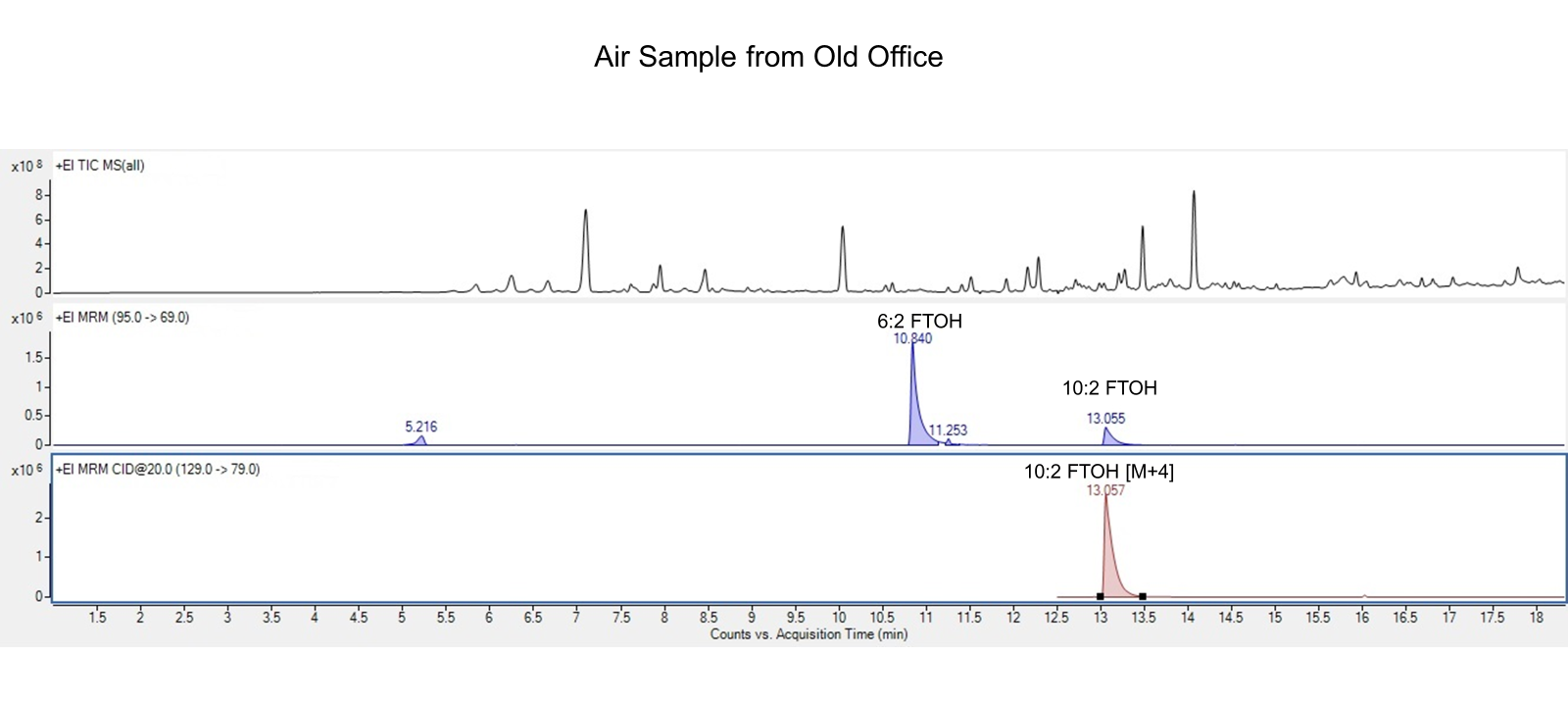 Chromatogram of 4 FTOHs obtained using the TD 3.5+
Chromatogram of 4 FTOHs obtained using the TD 3.5+
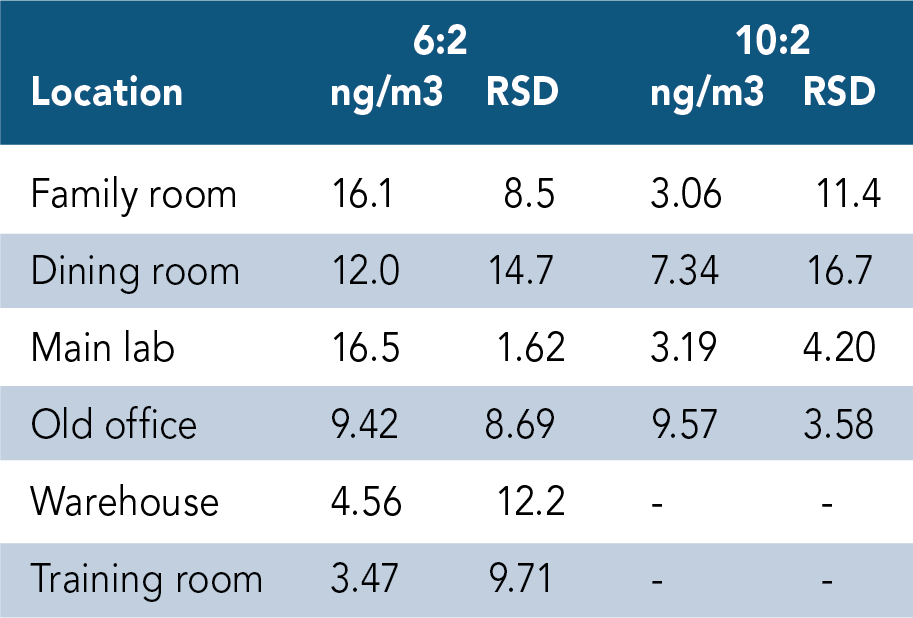 Airborne FTOH compounds and their respective vapor concentrations
Airborne FTOH compounds and their respective vapor concentrations
It can be seen that FTOH 6:2 was detected in all locations sampled. The vapor concentration ranged from 3.47-16.5 ng/m3. FTOH 10:2 was detected in four of six locations. It was not detected in the warehouse or training room. The vapor concentration ranged from 3.58-16.7 ng/m3.
This study demonstrated the TD-GC-MS/MS method developed is suitable for the quantification of FTOHs in air at very low levels.
Conclusion: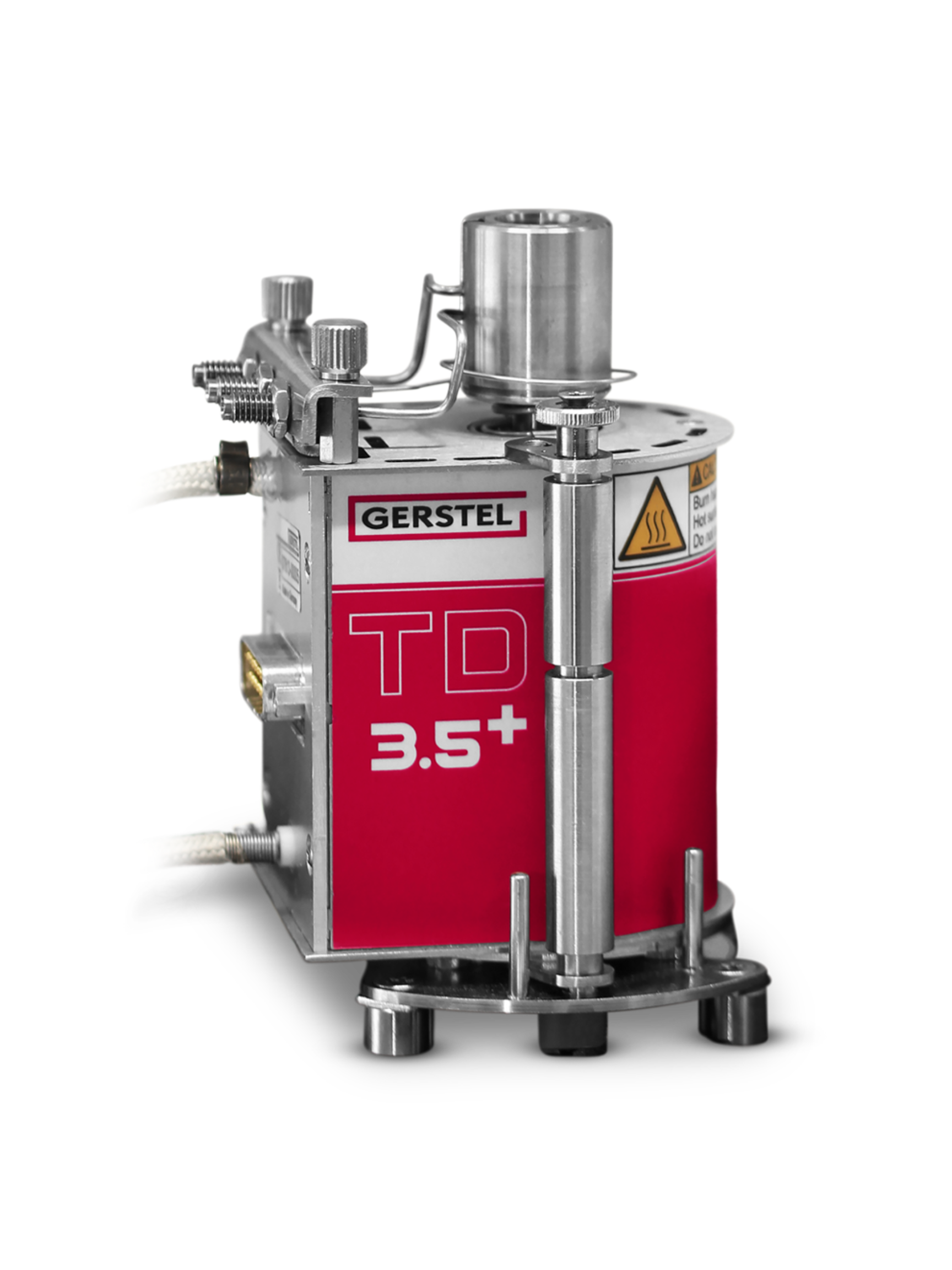
As volatile PFAS become increasing targets of concern, GERSTEL’s TD-GC-MS/MS technique meets the challenges scientists face when determining FTOHs in air. By providing low detection limits, precise and accurate results, and an efficient workflow, this method enables analysts to accurately assess PFAS contamination in air, even at low concentrations. The result is a safer and healthier environment for communities around the world.
References:
- [1] Z. G. Robbins, X. Liu, B. A. Schumacher, M. G. Smeltz, H. K. Liberatore, “Method development for thermal desorption-gas chromatography-tandem mass spectrometry (TD-GC–MS/MS) analysis of trace level fluorotelomer alcohols emitted from consumer products,” Journal of Chromatography A, vol. 1705, 2023. [Online]. Available: https://doi.org/10.1016/j.chroma.2023.464204.
Links: Follow the links below to learn more about PFAS in air.


